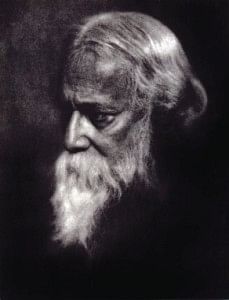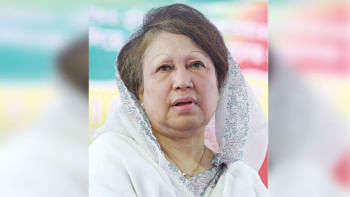Tagore through the eyes of folk artistes

A cultural evening to celebrate the 150th birth anniversary of Rabindranath Tagore. So what's new? In clear contrast to the all too familiar fare of Rabindra Sangeet or a Tagore dance-drama, this time a mesmerised Delhi audience was treated to a performance of 'Tagore through the eyes of folk artists.'
Through genres as diverse as Jhumur Naach, Paater Gaan, Chau Pala and Rabindranath-er Baul songs, one got to see the subtle interplay of Tagore and the folk culture of Bengal. The superb concept and design was by banglanatak dot com, a Kolkata-based 'social business' organisation.
The curtains went up with a vibrant performance of Jhumur dance and song, an indigenous art form. A troupe from the remote village of Purulia danced to the tunes of Rabindra Sangeet translated in Kurmali language. As young girls went through their expert paces, they made an indelible impression with the dance on superbly balanced sticks also known as Ranpa.
Paater Gaan came up next. In a short but interesting piece, the traditional scroll painters of Medinipur, presented their paintings on Tagore's life accompanied by songs or 'Paater Gaan,' explaining the paintings.
Entrancing too was the Chau Pala “Chitrangada Sambad” presented by a troupe from the impoverished Bamnia village in Pururlia. Based on Tagore's famous dance-drama “Chitrangada,” the masked dancers held the gathering in thrall with their powerful leaps and dramatic movements.
The piece de resistance was of course the Baul songs and Rabindra Sangeet inspired by those songs. The Bauls of Nadia, complete with ektara, dotara, dhol and flute, effortlessly sang along with Kolkata's renowned Riddhi Bandyopadhyay and Bhaskar Sen.
Explaining the linkages between Tagore and the Bauls, Amitava Bhattacharya, founder director of banglanatak dot com, says, “ Tagore was greatly influenced by Lalon Fakir. However, he could not meet Lalon because the Baul maestro died at the age of 117 when Tagore was only 24. While there is no documentation that Tagore actually met Lalon, the Bauls of Nadia believe that the two did meet. Later Bauls such as Gagan Harkara used to come to Shilaidaha where Tagore had a kuthi bari. Many of Tagore's songs were influenced by the Baul songs and later on the Bauls also got influenced by Tagore songs. You can see that the relationship between the Bauls and Tagore is like a full cycle.”
Banglanatak's recent programme in Delhi is related to its initiative to make art a means of livelihood. The organisation works with 3,200 folk artists across six districts of West Bengal, embracing six art forms -- Chau, Jhumur, Pata Chitra, Gambhira, Domni and Baul-Fakiri and helps revive them through inputs such as training and market linkages. The results are clear. Says Bhattacharya, “The folk artists used to earn an average of Rs 400 a month in 2004 through their art when we began working with them. Today on an average they have a monthly income ranging between Rs 2,100 and Rs 18,000.”
And if the artists survive, their arts will also survive, concludes Bhattarcharya.

 For all latest news, follow The Daily Star's Google News channel.
For all latest news, follow The Daily Star's Google News channel. 



Comments